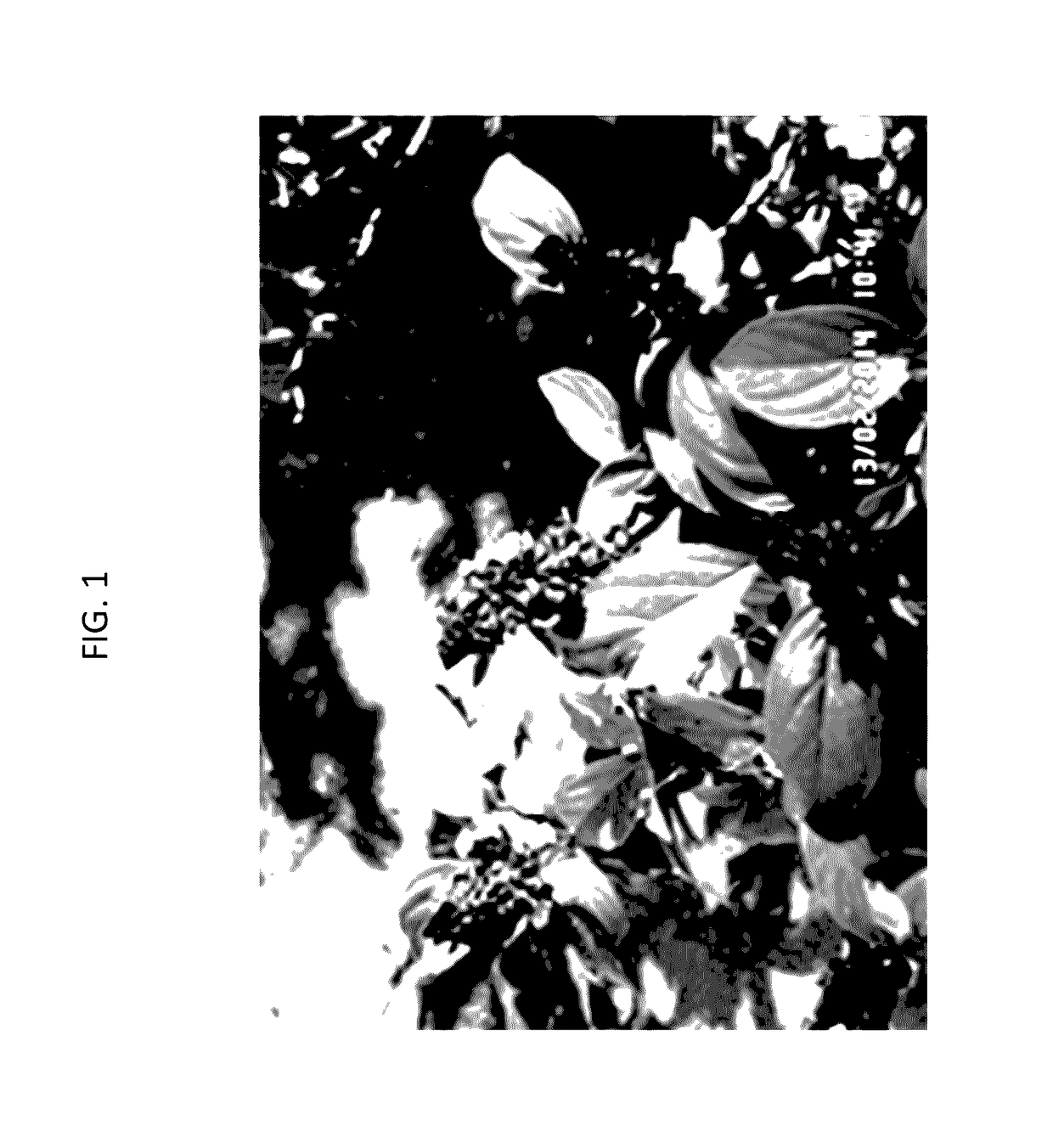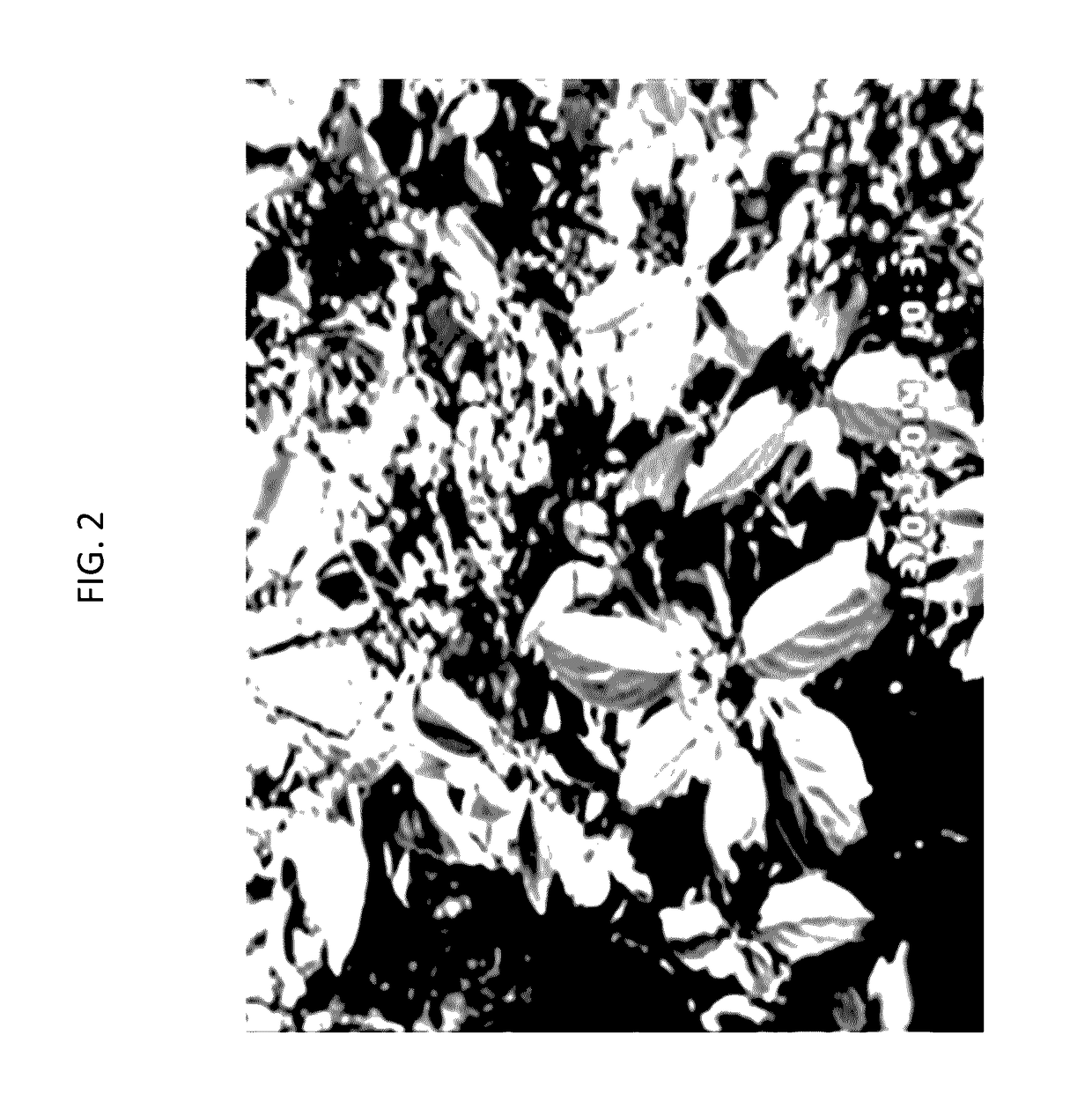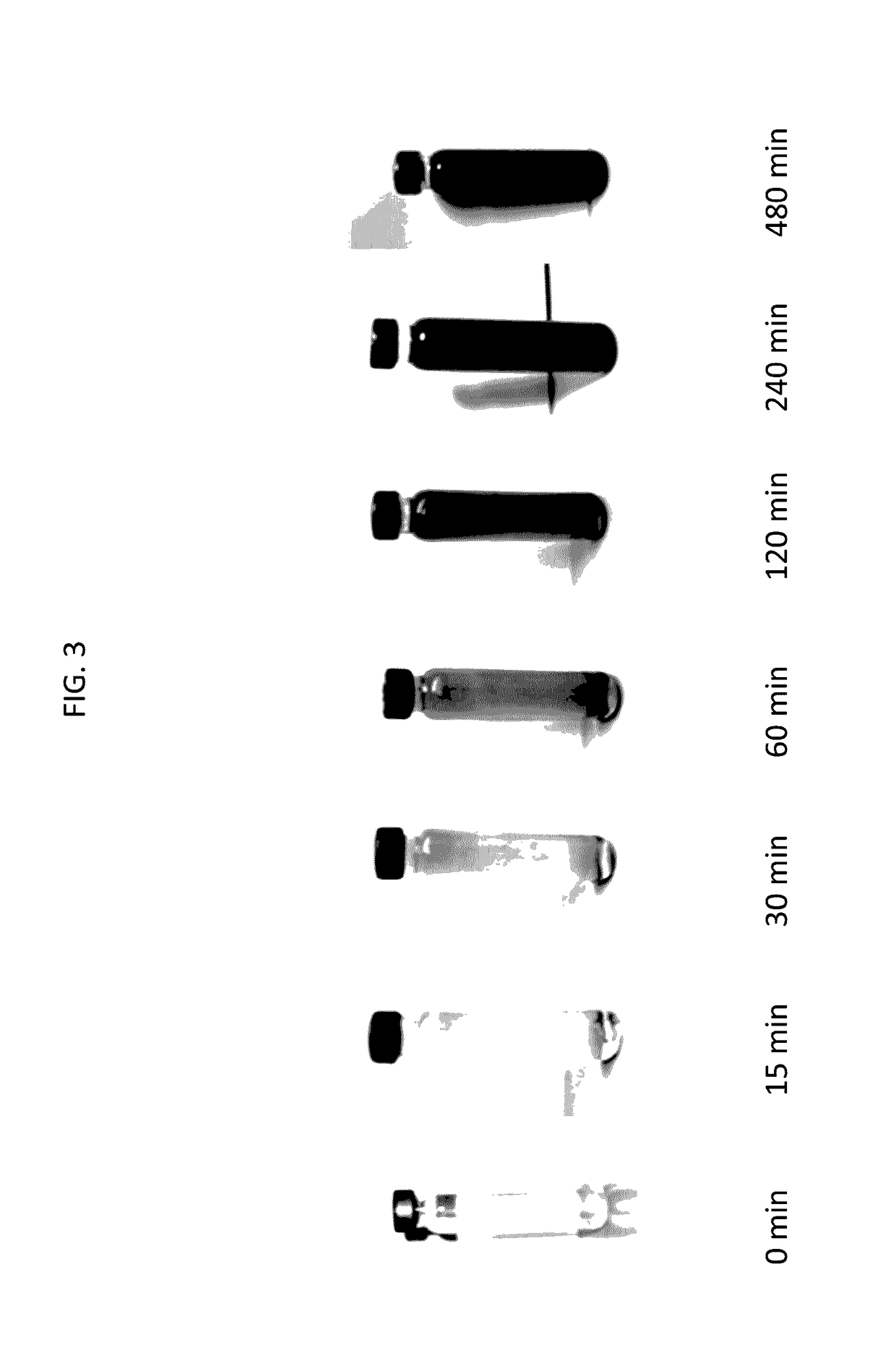Method for detecting Hg2+ in an aqueous solution
a technology of hg2+ and aqueous solution, applied in the field of colorimetric methods, can solve the problems of severe health risks to humans, developmental delays and other health problems of people exposed to hg2+/sup>, and achieve the effects of reducing the risk of cancer, and improving the detection accuracy
- Summary
- Abstract
- Description
- Claims
- Application Information
AI Technical Summary
Benefits of technology
Problems solved by technology
Method used
Image
Examples
example 1
Materials and Methods
1.1. Instruments
[0092]UV-visible spectrophotometry analyses were carried out using a single beam, Specord 50 UV-visible spectrophotometer (Analytik Jena) with a 1.0 cm quartz cell. Surface morphology characterization was carried out using field emission scanning electron microscopy (Lyra3 TESCAN FESEM). This FESEM was also equipped with an energy-dispersive X-ray spectroscope (EDS) detector. Fourier transform infrared spectroscopy analysis of the sample was done using a Nicolet 6700 FT-IR (Thermo Electron Corporation). X-ray diffractometry (XRD) analysis was done using Rigaku Miniflex II desktop X-ray diffractometer with a tube output voltage of 30 kV.
1.2. Chemicals and Materials
[0093]The chemicals used were of analytical grade and used with no further purification. Silver nitrate was purchased from Merck, Germany. The salts used included NaCl, CaCl2, BaCl2.2H2O, Zn(NO3)2.6H2O, NiCl2.6H2O, MnSO4.H2O, HgCl2, CuSO4.5H2O and KCl, all of which were purchased from Me...
example 2
Biosynthesis of the Silver Nanoparticles with the Plant Extract from Ocimum basilicum
[0098]After adding the plant extract drop-wise into the silver nitrate solution, the resulting reaction mixture was clearer, or more transparent and colorless than the silver nitrate solution, indicating the start of the reaction. The color change of the reaction mixture with time is shown in FIG. 3. The steady darkening of the reaction mixture from brown to golden brown indicated a continuous reduction of silver nitrate to biosynthesized AgNPs and an increase in the concentration or formation of biosynthesized AgNPs in the reaction mixture. The formation of biosynthesized AgNPs was characterized by the excitation of surface plasmon resonance vibrations in biosynthesized silver nanoparticles that resulted in a color change.
example 3
Effect of Various Factors on the Biosynthesis of Silver Nanoparticles
[0099]Referring the FIG. 4 depicting the absorbance versus the wavelength from the UV-visible spectrophotometry analysis for the effect of reaction time on the biosynthesis of AgNPs after mixing the silver nitrate solution with the plant extract at neutral pH and room temperature. No strong peak was observed within the first 120 mins after the commencement of the reaction. A pronounced peak became visible at 240 mins, which further increased from 240 mins to 480 mins. The gradual formation of the peak may be attributed to an increase in the biosynthesized silver nanoparticles formed in the reaction mixture and exhibiting light-excited surface plasmon resonance vibrations. The difference between the peak formed at time 240 mins and the peak formed at time 480 mins, however, was insignificant, indicating that the reduction of silver nitrate had almost reached completion at 240 min. Having shifted from a weak peak at ...
PUM
| Property | Measurement | Unit |
|---|---|---|
| wavelength | aaaaa | aaaaa |
| temperature | aaaaa | aaaaa |
| volume | aaaaa | aaaaa |
Abstract
Description
Claims
Application Information
 Login to View More
Login to View More - R&D
- Intellectual Property
- Life Sciences
- Materials
- Tech Scout
- Unparalleled Data Quality
- Higher Quality Content
- 60% Fewer Hallucinations
Browse by: Latest US Patents, China's latest patents, Technical Efficacy Thesaurus, Application Domain, Technology Topic, Popular Technical Reports.
© 2025 PatSnap. All rights reserved.Legal|Privacy policy|Modern Slavery Act Transparency Statement|Sitemap|About US| Contact US: help@patsnap.com



